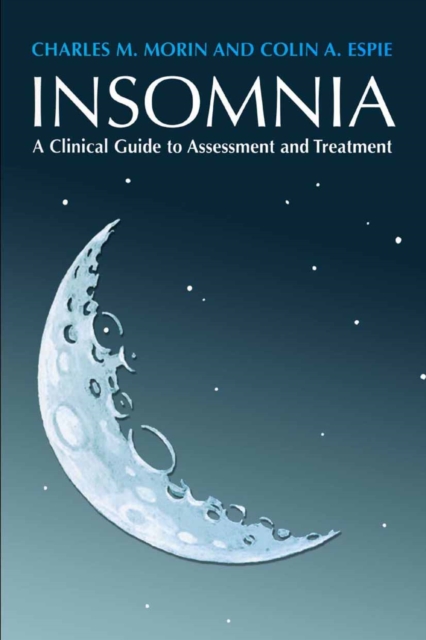
Insomnia : A Clinical Guide to Assessment and Treatment PDF
by Charles M. Morin, Colin A. Espie
Description
Along with increasing recognition of the consequences and costs of ins- nia, there is growing evidence documenting the effectiveness of cogniti- behavior therapy for insomnia.
Yet, there is still a major gap between available evidence and current clinical practice.
Much of this gap is due to economics, limited treatment access, and ineffective dissemination of knowledge.
There is a definite need for practical materials to facilitate access to and implementation of interventions for insomnia.
As scientis- practitioners, we are constantly reminded of this need by frequent requests from clinicians around the world for questionnaires and handouts to assist them in treating insomnia patients.
It was during a recent international sleep meeting, more specifically on a trainjourney between Dresden and Prague, that we drafted an outline of a handbook that would help fill this gap.
This clinical handbook describes an evidence-based treatment p- gram for insomnia.
Its content is based on materials that have been cl- ically tested and validated with patients in various settings and with different subtypes of insomnia.
The manual is divided into eight chapters. Chapter 1 presents an introduction to sleep and provides answers to f- quently asked questions about the nature of sleep, its determinants, and about the consequences of sleep loss and insomnia.
Chapters 2 and 3 outline the main clinical features of insomnia and differential diagnostic issues and describe a practical approach to the assessment of insomnia complaint.
Information
-
Download - Immediately Available
- Format:PDF
- Publisher:Springer US
- Publication Date:08/05/2007
- Category:
- ISBN:9780306478963
Other Formats
- Paperback / softback from £57.15
- Hardback from £88.35
Information
-
Download - Immediately Available
- Format:PDF
- Publisher:Springer US
- Publication Date:08/05/2007
- Category:
- ISBN:9780306478963






